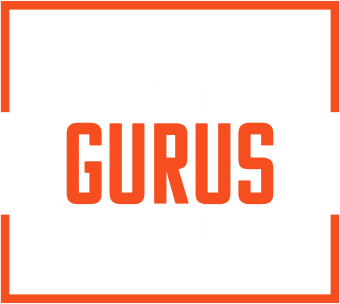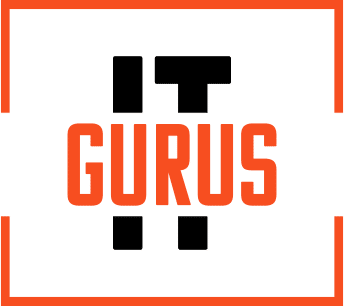Accountants and finance professionals use many different programs, tools, and platforms to conduct their work: specialized accounting software, Client Relationship Management (CRM) systems, Enterprise Resource Planning (ERP) solutions – and they all need to be able to “talk” to each other.
Achieving this harmony between different software can be a daunting task, often fraught with technical challenges. From ensuring data flows accurately between systems, to keeping everything running securely and efficiently, handling software integration can seem like a complex puzzle to solve.
This article will walk you through the essentials of software integration, ensuring you’re well-equipped to make your accounting software play nice with ERPs and CRMs. Let’s dive in.
Decoding Integrations: Software Singing in Harmony
What does software integration really mean, especially if you’re not a tech expert? Simply put, it’s about creating a seamless conversation between different software systems. Imagine each software as a team member in a relay race; integration ensures that the baton (in this case, data and information) is passed smoothly from one runner (software) to another without any hiccups.
This smooth transfer is crucial for a couple of reasons:
- Efficiency: When your systems are integrated, you reduce the need for manual data entry. Information entered into your accounting software can automatically update in your CRM and ERP, saving time and reducing errors.
- Data Accuracy: With everything interconnected, the chances of data mismatches or inaccuracies diminish significantly. This means you can trust the data you’re using to make crucial business decisions.
- Real-Time Decision-Making: Integrated systems provide real-time data. This means you can respond to market changes swiftly and make informed decisions promptly.
Understanding the Trio: Accounting Software, ERP, and CRM
- Accounting Software: This is where all your financial data lives. From tracking expenses to managing invoices, it’s the financial heartbeat of your business.
- CRMs: Customer Relationship Management systems help you manage and analyze customer interactions and data throughout the customer lifecycle. They are crucial for understanding your customers’ needs and enhancing customer relationships.
- ERPs: Enterprise Resource Planning systems integrate various business processes, like supply chain, operations, reporting, and human resource activities, into a single system.
Each of these systems plays a unique role, but when they communicate effectively, they create a symphony of streamlined operations, driving your business forward with precision and ease.
Tackling Common Software Integration Challenges
When integrating accounting software with CRMs and ERPs, it’s like navigating an obstacle course. Each hurdle represents a unique challenge that, when overcome, leads to a more streamlined and efficient business process.
One of the most significant challenges is ensuring that data remains consistent across all platforms. Imagine entering a client’s details into your CRM and having to manually update the same information in your accounting software. Not only is this time-consuming, but it’s also prone to human error. Synchronization issues can lead to discrepancies in data, causing confusion and potential business mishaps.
Different software systems are often designed with their own unique architecture and data formats. This can lead to compatibility issues, where one system speaks a different ‘language’ than the other, making communication between them challenging. It’s like trying to fit a square peg into a round hole – without the right tools or adaptations, it just won’t work.
Integrating various systems means sharing sensitive data across multiple platforms. This raises legitimate concerns about data security and privacy. Ensuring that all integrated systems adhere to stringent security protocols is crucial to safeguard your business against data breaches and cyber threats.
Lastly, the cost and complexity of integrating different systems can be daunting. For small to medium-sized businesses, the investment in both time and resources needed for seamless integration can become overwhelming.
Practical Solutions: A Path to Seamless Software Integration
Embarking on the journey of integrating your accounting software with ERPs and CRMs doesn’t have to be a trek through uncharted territory. There are practical and accessible solutions to help you chart a clear path through the integration landscape.
The following five solutions can turn complex challenges into manageable tasks.
Think of middleware as a translator, facilitating communication between different software systems that speak different languages. These platforms act as bridges, seamlessly transferring data between your accounting software, ERP, and CRM. They can automate data synchronization, reducing the risk of errors and saving valuable time.
When choosing software solutions for your business, consider their integration capabilities from the start. Some software systems are designed with integration in mind, offering built-in features that simplify the process. This proactive approach can save you from future headaches and complexities.
Sometimes, off-the-shelf integration solutions may not fit your unique business requirements. This is where custom solutions come into play. Hiring IT professionals or consulting with tech experts to develop a bespoke integration plan can ensure that all your systems work in harmony, tailored specifically to your business needs.
Cloud-based solutions offer a level of flexibility and scalability that traditional software can’t match. They often come with easier integration options, allowing for more seamless communication between different systems. Moreover, cloud-based platforms are continually updated by their providers, ensuring that security and compatibility issues are regularly addressed.
Never underestimate the power of online resources and communities. From forums and how-to videos to online courses, there’s a wealth of information available to guide you through the integration process. These resources can provide valuable tips and tricks to make integration more approachable.
ITGurus: Delivering Seamless, Simplified Accounting Software Integrations
While the road to seamless integrations may have its difficulties, the possibilities for creating a seamless, integrated system are vast. Embracing these strategies will simplify your business operations and open doors to new efficiencies and insights.
As a leading provider of IT solutions to accounting firms and finance professionals, ITGurus will help you navigate the complexities, manage the technicalities, and ensure that your business reaps the full benefits of a harmonized software system.
Whether you’re looking to integrate for the first time, or need to optimize existing systems, our team of experts will provide the support and solutions you need for a seamless flow of information between all your critical business tools.


